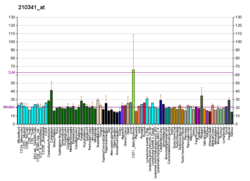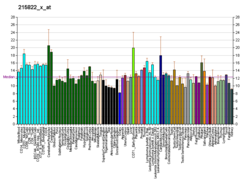MYT1
Protein-coding gene in the species Homo sapiens From Wikipedia, the free encyclopedia
Myelin transcription factor 1 is a protein that in humans is encoded by the MYT1 gene.[5][6][7]
Function
The protein encoded by this gene is a member of a family of neural specific, zinc finger-containing DNA-binding proteins. The protein binds to the promoter regions of proteolipid proteins of the central nervous system and plays a role in the developing nervous system.[7]
Interactive pathway map
Click on genes, proteins and metabolites below to visit related articles. [§ 1]
Interactions
References
Further reading
External links
Wikiwand - on
Seamless Wikipedia browsing. On steroids.







